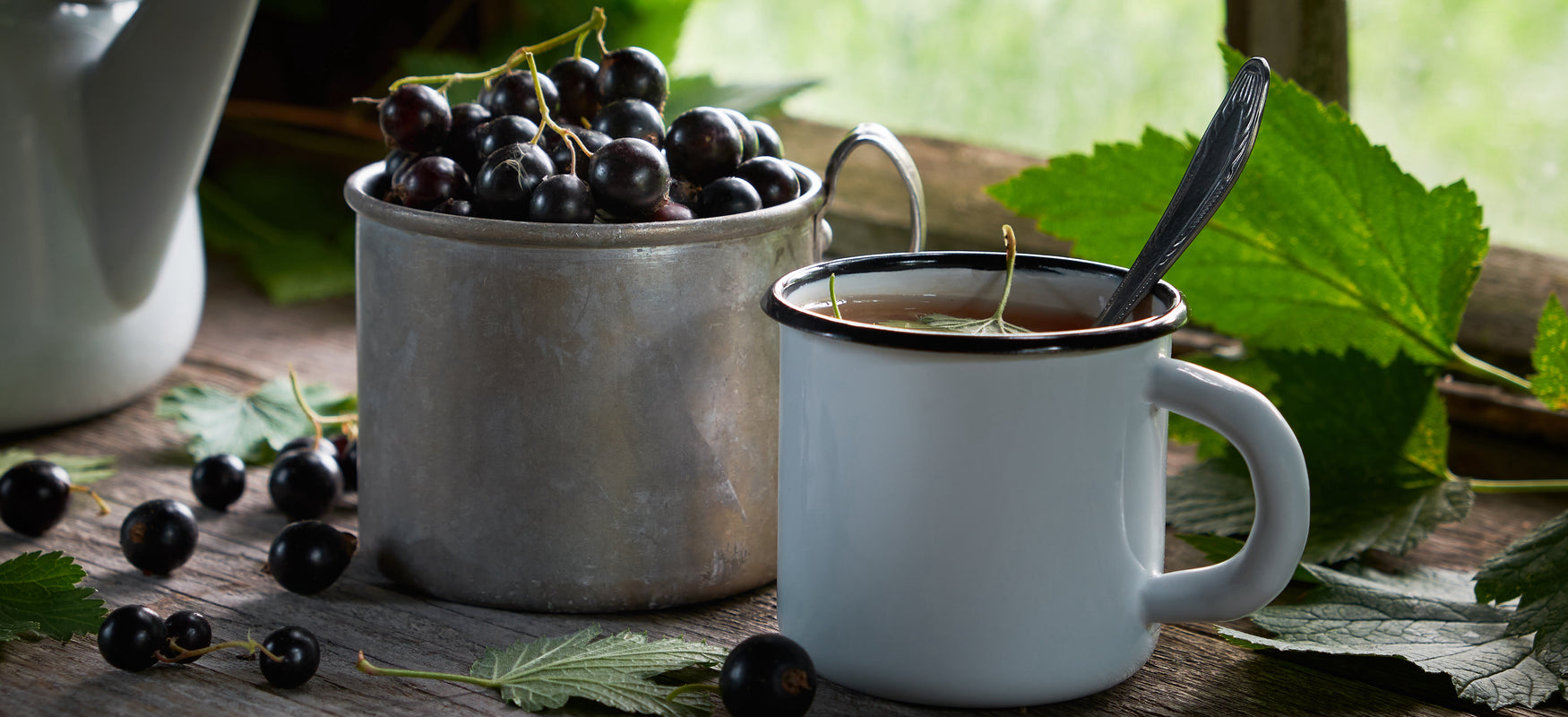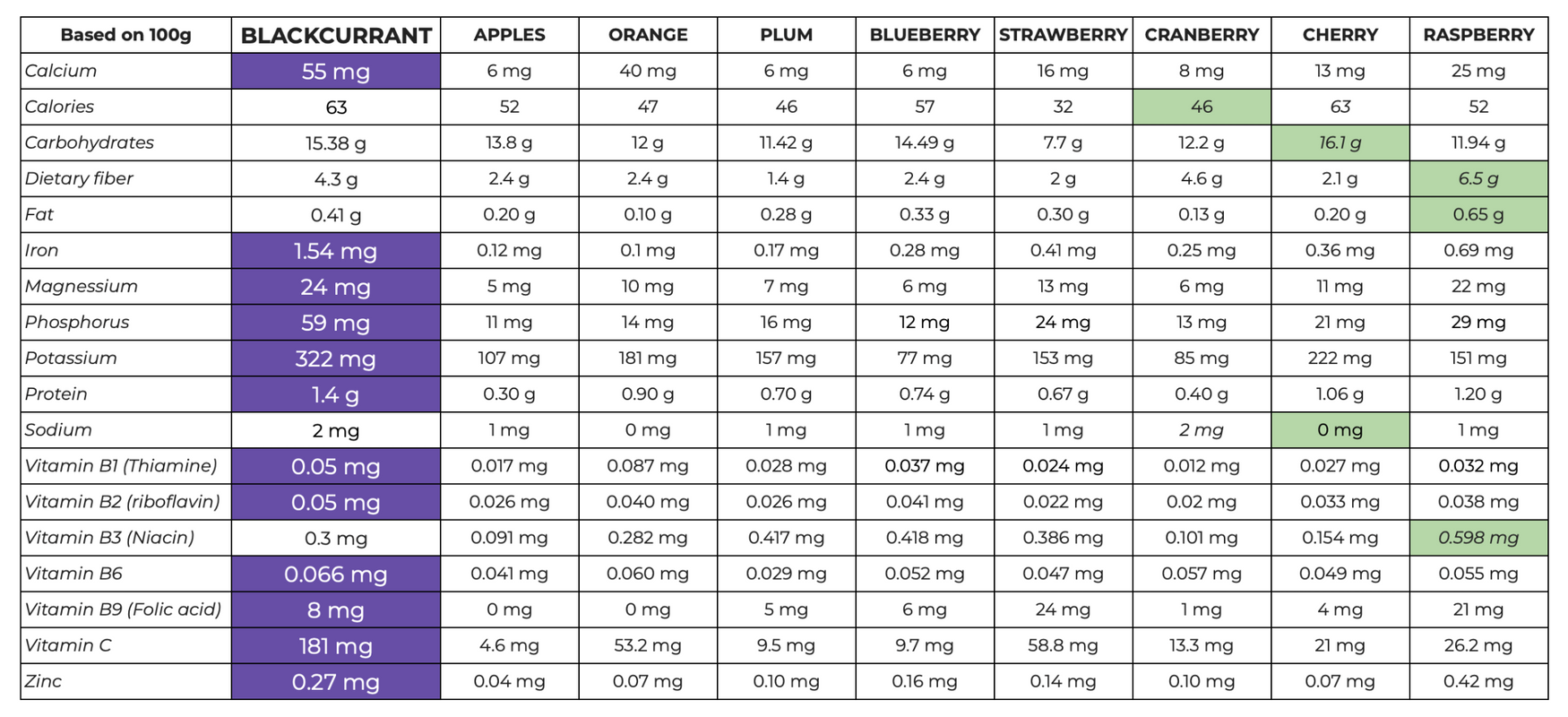by Emilia benton
Currant Nutrition Facts and Health Benefits
Updated on September 13, 2021
Medically reviewed by Mia Syn, MS, RDN
Currants may be tiny, but they pack a big nutritional punch. Like other berries, they are excellent sources of fiber, vitamin C, and antioxidants, especially the flavonoid anthocyanin. While they've long been used in traditional medicine, researchers are now finding scientific evidence for the anti-inflammatory, antioxidant, and antimicrobial powers of currants.
Currants come in black, red, pink, and white varieties. They are primarily used in jams and jellies, as well as in fillings for pies and tarts, because of their acidic flavor (pink and white varieties are sweeter).


Nutrition INfo provided by USDA
Currant Nutrition Facts
One cup of raw black currants (112g) provides 71 calories, 1.6g of protein, 17g of carbohydrates, and 0.5g of fat. Currants are an excellent source of vitamin C, iron, and potassium. The following nutrition information is provided by the USDA.
• CARBS: Black currants have about 17.2 grams of carbohydrate per serving. They are a source of natural sugar. Black currants have a glycemic index of 22, which is considered low.2
• FATS: As a berry, currants are unsurprisingly nearly fat-free, with less than half a gram of fat per serving.
• PROTEIN: Black currants are also have higher protein than most other fruits, with 1.4 grams per serving.
• VITAMINS & MINERALS: Currants are high in vitamin C, which supports healthy immune function. They also contain iron, which helps prevent anemia; calcium, which supports strong and healthy bones; and phosphorus, which aids in muscle contraction.
Currants also contain anthocyanins which act as an antioxidant and can help prevent harm from free radicals. Darker-colored (black and red) currants have more anthocyanins than white and pink varieties, but all have about the same amount of vitamin C.
• CALORIES: One cup of raw black currants (100g) provides 63 calories, 86% of which comes from carbs, 8% from protein, and 6% from fat, rounding up.

By WebMD Editorial Contributors
Health Benefits of Black Currant
Reviewed by Dan Brennan, MD on August 22, 2020
Black currants (Ribes nigrum) have an interesting history in the United States. While they’ve been a popular snack in Europe for centuries, these purple-black berries were illegal in the states until recently. Now, they’re making a comeback.
Black currants are native to the more temperate areas of Northern Europe and Northern Asia. Written records of their use date back to the 1500s. While they once grew in the US, they were banned in the early 1910s after they were discovered to host a fungus that killed white pine trees. The ban stayed on the books in most states for years, and the berry remains uncommon in the U.S.
Black currants have a strong flavor that many say is an acquired taste. Though they usually have a tart flavor, they become sweet when ripe. They’re also filled with vitamins, minerals, and antioxidants, all of which provide major health benefits.
• Health Benefits: Black currants are full of antioxidants, including anthocyanins. Anthocyanins give black currants their characteristic dark color and fight free radicals in the body, reducing oxidative stress and cell damage.
• Immune Health: Black currants are high in antioxidants, including vitamin C. Along with the anthocyanins in black currants, these antioxidants can help to give your immune system a boost, allowing your body to fight infection and viruses more effectively.
• Reduced Inflammation: Black currants are rich in an omega-6 fatty acid called gamma-linoleic acid. This compound can help to reduce inflammation, as well as improve symptoms of inflammatory diseases like rheumatoid arthritis. Some studies also showed that gamma-linoleic acid helped to lessen joint pain and stiffness for people with arthritis.
• Eye Health: Anthocyanin-rich black currants may help treat glaucoma, one of the leading causes of blindness. The antioxidant increases blood flow in the eyes and may help to slow the progression of glaucoma. Gamma-linoleic acid, linoleic acid (found in vitamin C), and other antioxidants may also help to improve dry eye and symptoms of eye fatigue.





